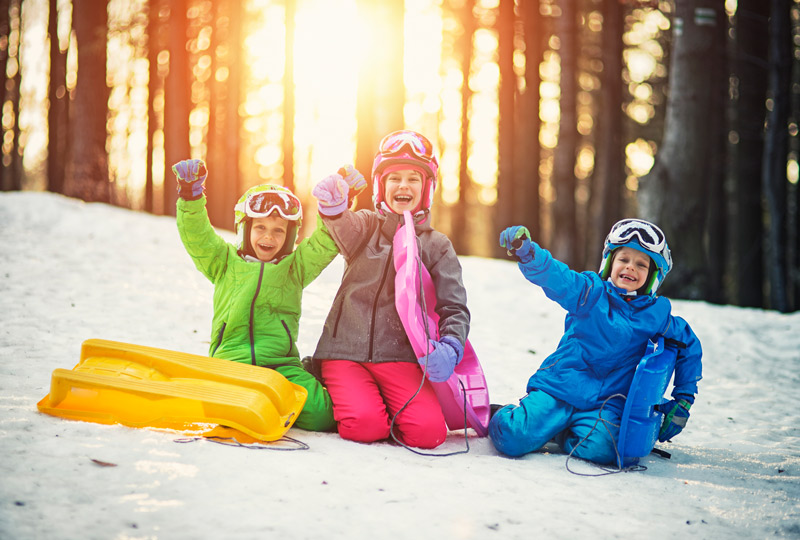Excitement over flurries can overtake common sense; remember to sled safely on the snow.
As snow promises to blanket Middle Tennessee, children will have opportunities to experience the thrill of sledding. While sledding offers children a memorable way to enjoy winter weather, it is important to note that these activities are capable of leading to serious injuries and, in severe cases, death. Adults should be mindful of the following information to make sure all sledders remain safe:
Sledding injuries
- About 20,000 children are injured in sledding accidents every year.
- Injuries typically occur when the sled hits a stationary object or when the child falls off.
- The most frequently injured body part is the head and common injuries include bruises, cuts and broken bones.
Preparing to sled
- Ensure that children are under adult supervision at all times.
- Provide children with proper safety equipment, most importantly a helmet. (Tip: Try to get your little one a properly-fitting winter sports helmet, but bicycle helmets will suffice.)
- Children must be dressed for warmth for outdoor activities during the winter. Consider dressing children in multiple layers and purchasing accessories such as thick gloves, mittens and snow boots.
- Avoid wearing a dangling scarf because it can cause strangulation or neck injury while sledding.
- Don’t get creative when it comes to sledding. Children should only use sleds; don’t use garbage can lids, laundry baskets, kayaks, cookie sheets, etc.
- Choose a sled in good condition, with no sharp edges. The safest sleds allow your child to control the direction and brake.
- Set reasonable time limits on outdoor winter play to prevent children from developing hypothermia or frostbite.
Finding the perfect spot
- Look for spacious, well-lit, gently sloping hills with a level run-off at the end to allow the sled to safely slow to a stop.
- Avoid sledding in the vicinity of rivers, streams or ponds.
- Do not sled on public streets, driveways, rocky hills or parking lots.
- Avoid sledding near a cliff or on hills that end in a steep (slope of greater than 30°) drop off.
Sledding tips
- Have children sit face-forward on their sleds with their feet downhill. Doing so will minimize the risk of sustaining a serious head injury.
- Take turns sledding to avoid collisions.
- Kids under the age of 5 should sled with an adult.
- Walk up the side of hills to leave the middle area open for fellow sledders.
- Never pull a sled with a motorized vehicle. Towing sleds can result in serious injuries or death. Items towed behind motorized vehicles have no braking power. Parked cars, curbs, trees, telephone poles and even hard snow and ice can kill you.
- Communicate with your kids as they go down the hill should any obstacle arise.
Taking these necessary precautions both before and during sledding adventures creates a safer environment for everyone involved. Strive to keep you and your kids safe on the hill this winter.

Keeping Kids Safe
The Injury Prevention Program at Monroe Carell Jr. Children’s Hospital at Vanderbilt strives to reduce unintentional injuries among children and promote safe behaviors in the community.

